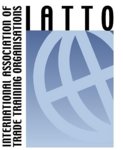New Zealand's Trade History
Significant Dates in New Zealand’s Trade History
This is a list of significant dates for New Zealand’s international trade. They are significant for a variety of reasons and some people may disagree with this choice. If you would like to suggest additional dates with your reasons for choosing them please email: info@export.ac.nz
2010 (March) New Zealand joins negotiations for a broadened free trade agreement based on the existing Trans-Pacific Strategic Economic Partnership Agreement or P4 which would include the United States, now a significant market for New Zealand products.
2008 (7 April) China-New Zealand Free Trade Agreement signed in Beijing. New Zealand is the first developed country to sign such a deal with China. It entered into force on 1 October 2008.
2004 (29 February) Sir Peter Jackson receives an Oscar for his direction of The Lord of the Rings: The Return of the King. This cements the importance of New Zealand’s creative industries as part of our international trade.
2001 (October) Fonterra, New Zealand’s largest company was launched. It has become the world’s leading dairy exporter.
1999 (1 September) Mike Moore, former New Zealand Prime Minister, took up the position of Director-General of the World Trade Organization. His term of office ended in 2002 and currently he is New Zealand’s Ambassador to the United States.
1995 (1 January) The World Trade Organization (WTO) officially commenced, replacing the General Agreement on Tariffs and Trade (GATT), which started in 1948 (see 1947 below). New Zealand was a founding member.
1983 (1 January) The Closer Economic Relations (CER) Agreement between New Zealand and Australia came into effect. The actual treaty was signed in Canberra on 28 March 1983 but then Prime Minister Robert Muldoon had earlier signed a "Heads of Agreement" on 14 December 1982 that allowed the basic provisions of the agreement to take effect from 1 January 1983. This was New Zealand’s first free trade agreement.
1973 (1 January) Britain, formerly New Zealand’s most important export market, joins the European Economic Community (EEC) later to become the EU. As a result New Zealand has to find new markets for its exports.
1970 Growth of sunrise industries and exports: horticulture (including kiwifruit), fish and wine.
1953 First shipment of meat to Japan.
1947 (30 October) GATT (General Agreement on Tariffs and Trade) signed in Geneva. New Zealand was one of the original contracting parties.
1940 Exports to the United Kingdom peak. 88% of New Zealand’s trade by value went to the UK.
1932 (10 July–20 August) The Ottawa Agreements: a series of trade agreements between Britain and its Dominions including New Zealand were signed. It introduced a system of Imperial Preference, under which agricultural products from the Dominions were allowed to enter Britain free of duty. In return, New Zealand and the other Dominions gave preferential treatment to manufactured goods imported from Britain.
1882 (15 February) First shipment of frozen meat left for the United Kingdom from Port Chalmers, on the sailing vessel Dunedin.
1853 Official trade statistics compiled for the first time by the Government situated in Auckland.
1830 (January – August) New Zealand exported 500 tons of flax, 69,000 pounds of salt, as well as timber, potatoes, maize, seal skins, whale oil and pigs to New South Wales, Australia. Much of the agricultural produce was grown by MÄori entrepreneurs. From Australia, New Zealand imported 7000 bricks, beer, flour, bread, as well as cutlasses, gunpowder and muskets.
1820s Trade in flax began with Australia with the product being worked and traded by MÄori from stations on the coasts of Northland, Waikato, Taranaki, Coromandel, Bay of Plenty, the East Coast, Southland, both sides of Cook Strait and Banks Peninsula. The flax trade was a generator of early growth but peaked in 1831.
1794 New Zealand’s export trade began when the British Royal Navy ship 'Fancy' took 200 kauri trees for spars from Doubtless Bay in Northland and the Coromandel Coast in 1794.
Selected Resources:
Callaghan, Sir Paul (2011) From where I sit (Part 1). NZ manufacturer v.2 no.5 (July) p.12
King, Michael (2003) The Penguin history of New Zealand. Auckland: Penguin Books.
McKinnon, Malcolm (Ed.) (1997) Bateman New Zealand historical atlas | Ko Papatuanuku e Takoto Nei. Wellington: David Bateman in association with Historical branch, Dept. of Internal Affairs.
McLintock, A. H. (Ed.) (1966) An encyclopaedia of New Zealand. Wellington: Govt.Printer. 3 v.
If you have found this information useful and would like to copy it all, here is a pdf version which may be freely copied. ![]() NZ Trade history sig dates enl..pdf(318.89 KB)
NZ Trade history sig dates enl..pdf(318.89 KB)
Page last updated 25 August 2011









